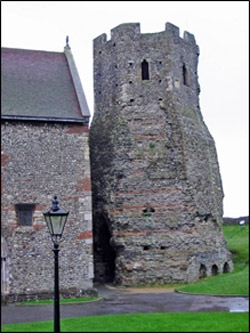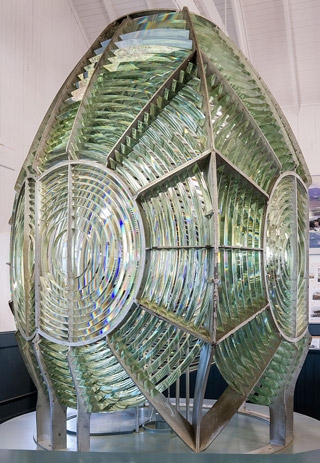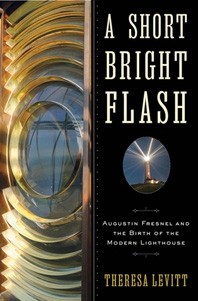Many of us will try to escape the heat this summer by catching the cool breezes of our shorelines. If you find yourself at the beach and want to enjoy something else that’s cool (for science, history, and even art), I recommend that you seek out a lighthouse. Most of these structures that pepper the coastline are historic properties, once essential tools of commerce long ago replaced by automated hazard markers, radio beacons, and GPS receivers.

Lighthouses have been recorded in history since the time of the fabled structures built by the Greeks in the third century BC in Alexandria and Rhodes. For nearly 2000 years, lighthouses were simply towers or piles of rocks where a fire or torch was kept lit to guard a dangerous shoreline or shoal. By the early 18th century, both sides of the English Channel and much of the American coastline were dotted with grand lighthouses marking dangerous conditions. However, the persistent problem throughout most of this bimillennium was the all-too-short warning time. Wary sailors could not often spot the dim warning beacon in time and found themselves in the midst of the very hazard that they were being cautioned against. By the late 18th century, burning piles of wood had been replaced with a whale-oil lamp and simple, parabolic mirror, but the observable range in fair weather was still only a few miles. These beacons may likely have lured more sailors to their deaths than protected them. The situation changed radically by the invention by a young French engineer, Augustin Fresnel, of a compound lens that efficiently focused a large fraction of light from a single source into a concentrated beam. This famous lens bares his name.

Fresnel’s combined knowledge of physics and precise calculations, and his tenacious ability to convince French glass manufacturers to develop improved methods of making accurately shaped and sufficiently pure glass lenses and prism elements, made his first public demonstrations successful. When his first lens was installed on the French coast at Cordouan, the resulting beacon was 38 times brighter and could be seen by sailors on the top rigging of their ships 33 nautical miles away. As an additional benefit, Fresnel calculated that his light consumed half as much oil as one of the simple reflector lights on the neighboring English coast. A typical Franco-British trade war followed over the next few decades as the sailors, their underwriters, and new industries clamored to build and install the new lenses on both coastlines. In France the number of shipwrecks each year dropped by two-thirds.
The lighthouse situation in the new nation of the United States is an almost comical example of Yankee frugality. By the time the US secured its independence in 1776, there were a dozen lighthouses on eastern shores. The new US Congress did not let much time pass before usurping control of these structures (and imposing shipping revenue taxes) under the Lighthouse Act of August 7, 1789. During the first three administrations, some commissioner of revenue controlled the service. Unfortunately, when the specific office US Lighthouse Establishment was created by President James Monroe in 1820, it was put under the administration of an accountant, the “Fifth Auditor of the US”—Stephen Pleasanton. Mr. Pleasanton did not live up to his surname; for the next 30 years his mantra was to save funds, even if it came at the expense of commerce and poor infrastructure. He had no scientific or engineering knowledge, and had never been to sea to experience firsthand the purpose of these maritime sentinels. Pleasanton resisted expenditure for a Fresnel lens; he was proud that he spent less money than Congress appropriated for the task of operating a larger number of lighthouses than Britain—and at a fraction of Britain’s cost. Never mind that these lights couldn’t be seen and the maritime community constantly complained of their inferiority compared to what they experienced on the other side of the Atlantic.
It took a specific act of Congress in 1838 and the involvement of a growing technical class—engineers from the Navy and West Point and physicists from Princeton and Harvard—to circumvent Pleasanton’s control. The first US beacons to use Fresnel lenses were lit off Nantucket and in the Delaware Bay at Brandywine in 1850; they garnered immediate praise for their sight range of 40 miles.
A comparison of the Fresnel lamp at Brandywine with the simpler reflector lights of Cape Henlopen to the south showed that the Brandywine light was nearly six times brighter and used nearly four times less oil than the Henlopen light. The latter argument swayed Congress to establish a new Lighthouse Board in 1852. The economic argument was aided by a frightening experience of several Congressmen on a steamer from Washington to New York harbor—the ship’s captain could not make out the traditional harbor lights off Sandy Hook, NJ. The new board was aided by physicist Joseph Henry, who was asked to chair the committee on experimental modeling.

If you would like to learn more about how Fresnel’s applied physics trumped politics on both sides of the Atlantic, you will enjoy “A Short Bright Flash,” written by Theresa Levitt. The Wall Street Journal published a favorable book review. You can draw your own conclusions about whether our shining light on Congressional actions has improved since Fresnel’s lamp was lit on the Brandywine.
